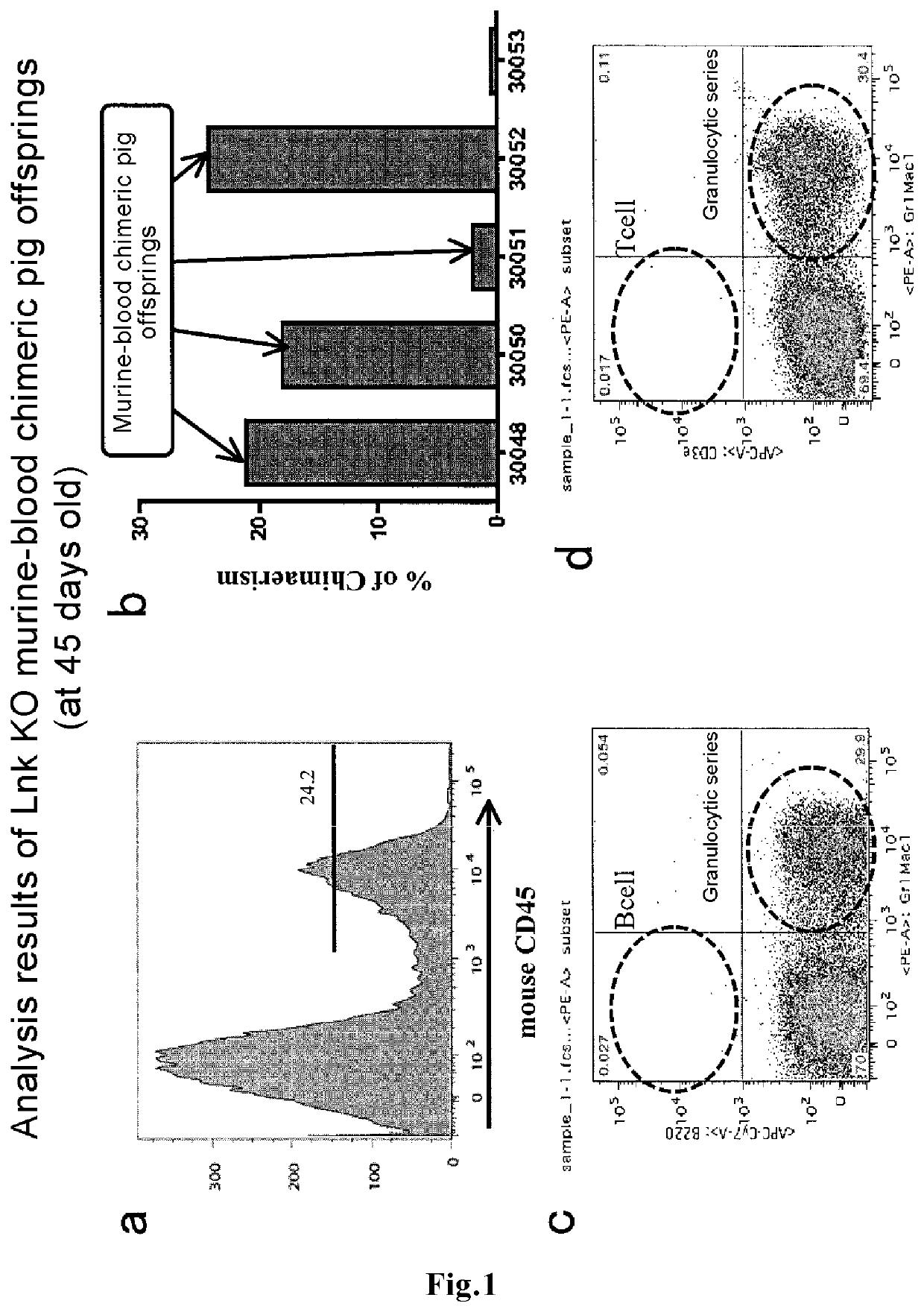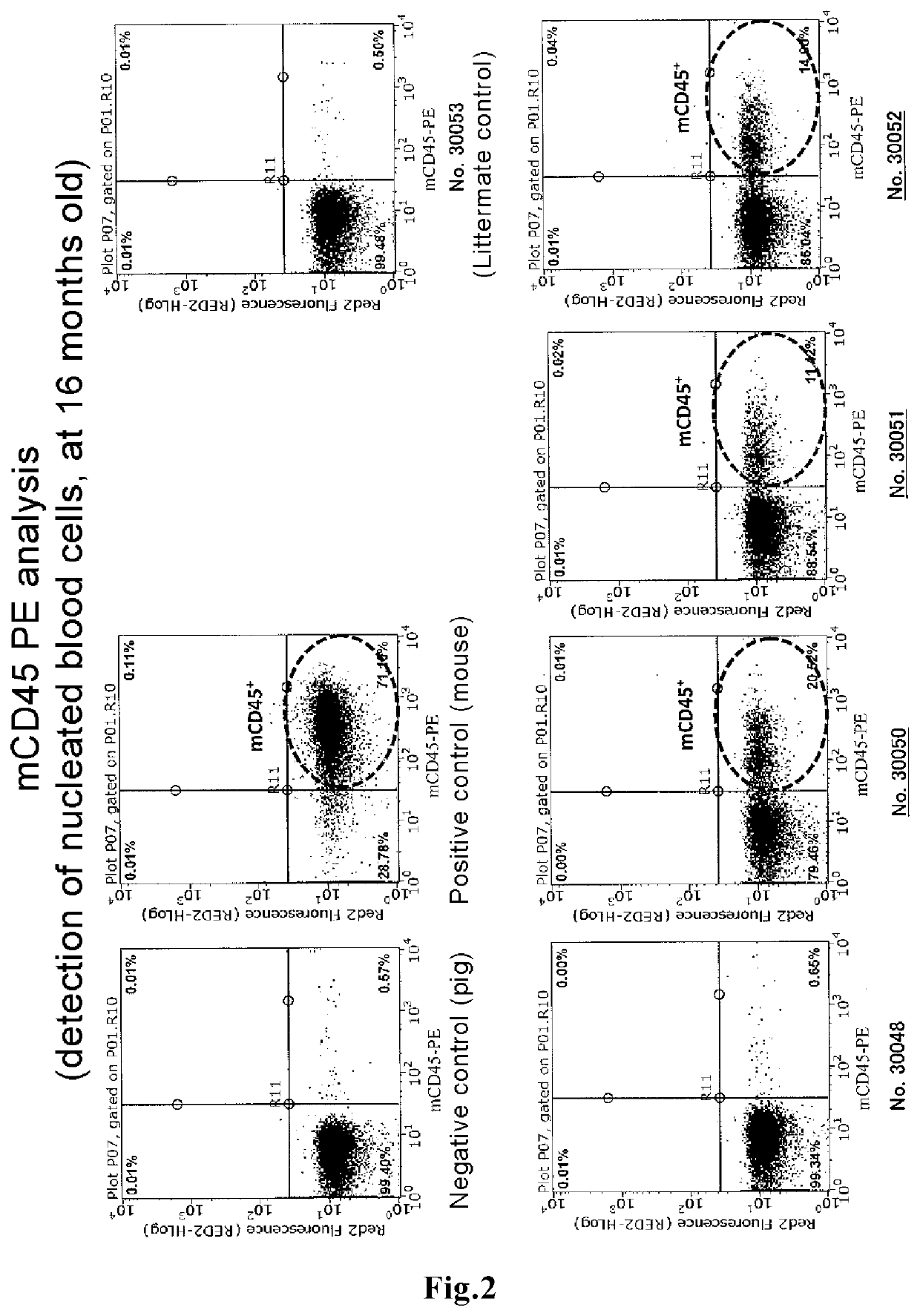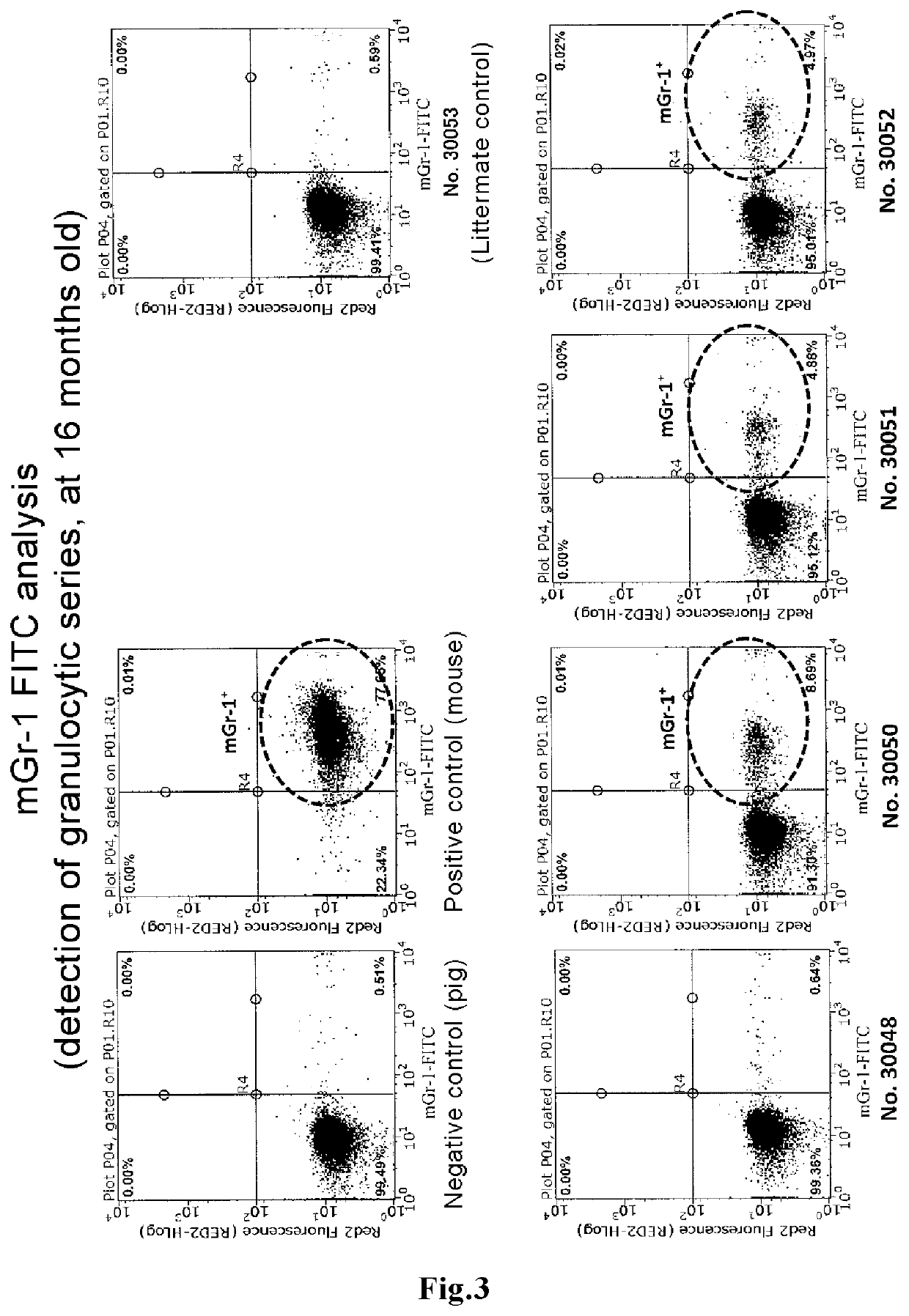Method for producing blood chimeric animal
a non-human animal and chimeric technology, applied in the field of chimeric non-human animals, can solve the problems of low survival rate of hematopoietic stem cells in thus produced individuals, and inability to produce non-human primates or medium to large domestic animals that retain human blood cells at a high percentage. , to achieve the effect of high chimerism, high survival rate of hema
- Summary
- Abstract
- Description
- Claims
- Application Information
AI Technical Summary
Benefits of technology
Problems solved by technology
Method used
Image
Examples
examples
[0058]The present invention will now be described specifically, with reference to Examples. However, the present invention is in no way limited by the following Examples.
1. Preparation of Murine Hematopoietic Stem Cells in which Lnk Gene is Knocked out
[0059]As a homozygous Lnk knockout mouse, a known mouse strain (Takaki et al., 2000. Control of B cell production by the adaptor protein Ink. Definition of a conserved family of signal-modulating proteins. Immunity. 13:599-609.; JP 2007-89432 A) which has been maintained in the animal experimental facility of The Institute of Medical Science of The University of Tokyo, under special pathogen-free conditions, was used. This mouse strain was produced by: producing heterozygous Lnk knockout mice from murine ES cells in which the coding region of the Lnk gene was disrupted by a targeting vector; and by mating the thus produced heterozygous Lnk knockout mice with each other.
[0060]Hematopoietic stem cells to be used in the transplantation in...
PUM
| Property | Measurement | Unit |
|---|---|---|
| time | aaaaa | aaaaa |
| time | aaaaa | aaaaa |
| time | aaaaa | aaaaa |
Abstract
Description
Claims
Application Information
 Login to View More
Login to View More - R&D
- Intellectual Property
- Life Sciences
- Materials
- Tech Scout
- Unparalleled Data Quality
- Higher Quality Content
- 60% Fewer Hallucinations
Browse by: Latest US Patents, China's latest patents, Technical Efficacy Thesaurus, Application Domain, Technology Topic, Popular Technical Reports.
© 2025 PatSnap. All rights reserved.Legal|Privacy policy|Modern Slavery Act Transparency Statement|Sitemap|About US| Contact US: help@patsnap.com



